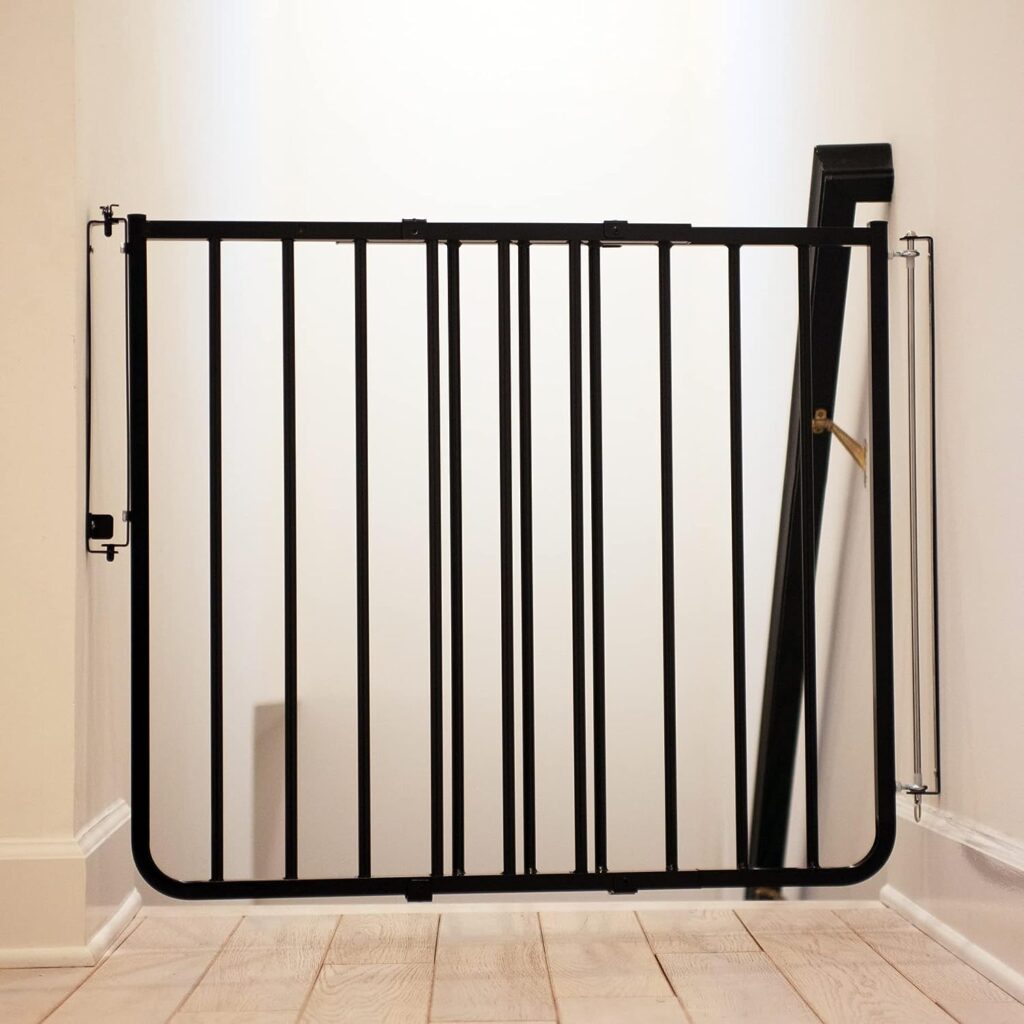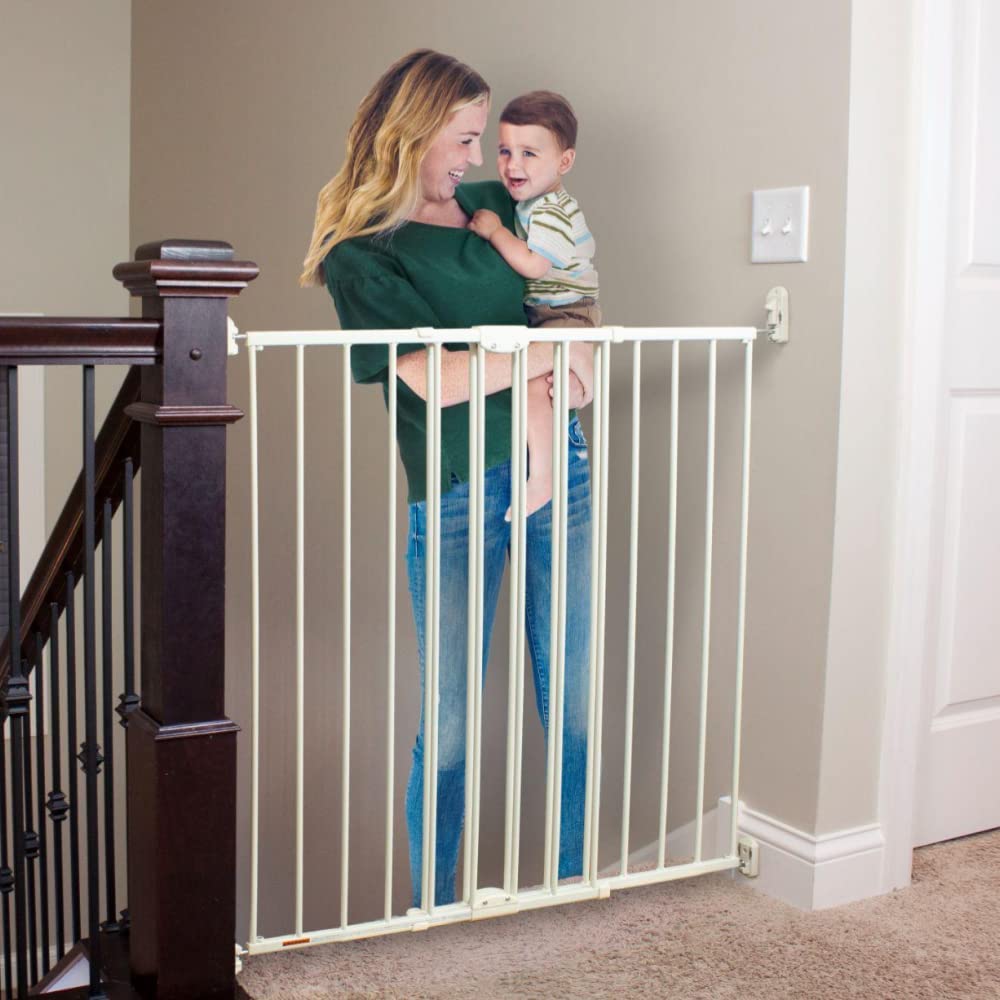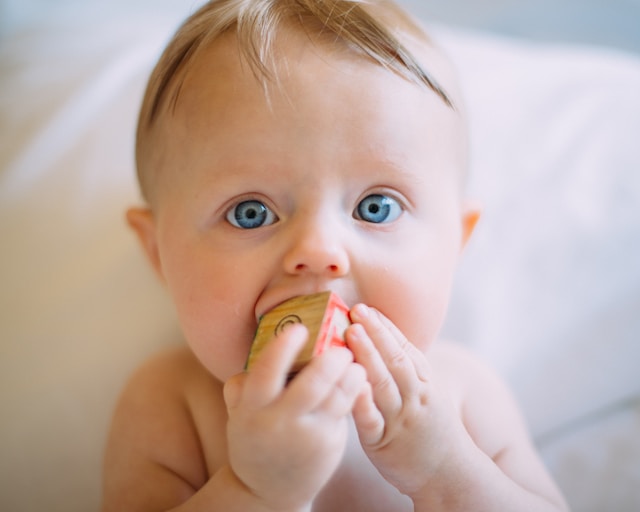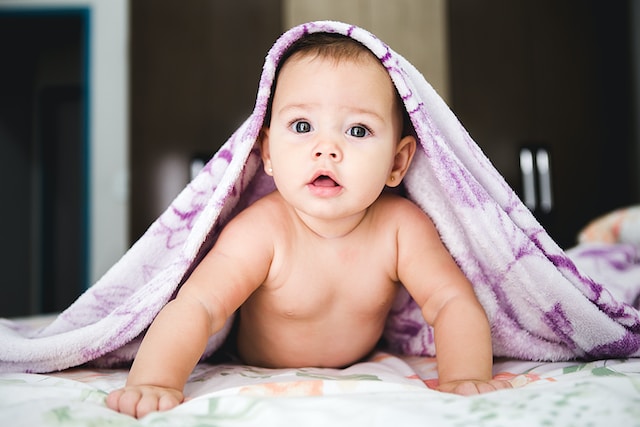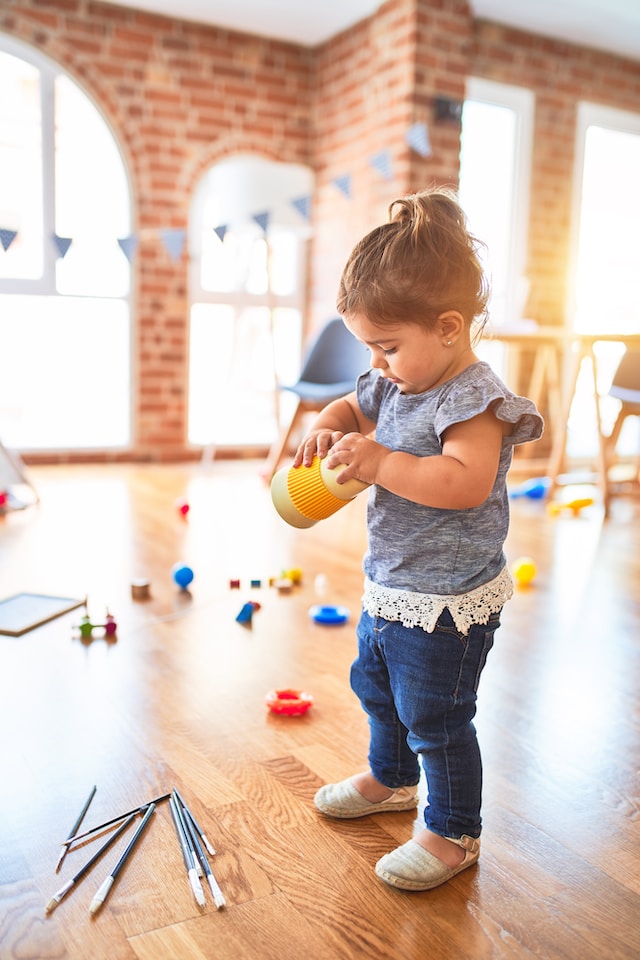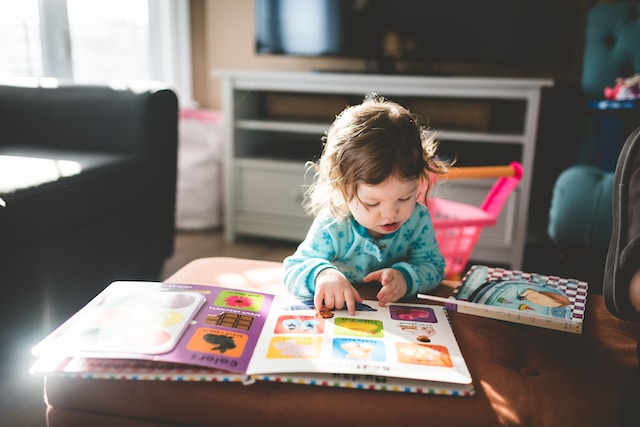Ah! It’s time to play outside with your little one! But childproofing the outdoors brings a whole new set of safety rules.
No matter whether you live in a suburban area with a small, fenced backyard, have a rural setting with a sprawling yard and garden, or have unique safety challenges, such as your own playground equipment or swimming pool, vigilance is key!
In this article, we are going to cover not only babyproofing your yard, garden, and pool area, but also extra reminders for general outdoor safety ideas for little ones.
It’s so important to get our children outside for their health and happiness, but we need to be aware of hidden (and not so hidden!) dangers in the environment.Come with me as we go out to play!
PREPARING FOR THE ENVIRONMENT
Check the weather before going outside and make sure your child is clothed properly for the temperature. Do they need a jacket or coat? If it’s raining gently, a raincoat and umbrella may be in order. Is there snow? Warm hats and gloves are key. If it is warm outside, don’t overdress your kids, but consider lightweight long sleeves and hats for sun exposure.
Protect your child’s skin by applying sunscreen to exposed areas of their body. Even on overcast days, as much as 80% of the sun’s rays may breach the cloud cover, so don’t skip this step. Use a lotion with an SPF between 30-50 for children over 6 months old & keep younger babies out of the sun altogether by giving them their playtime in the shade.
Make sure your child is staying hydrated while playing outside. Watch them for signs of heatstroke, such as drowsiness, headache, and irritability, especially if it is particularly hot or if they are being very active. If you notice anything amiss, move them indoors or into a shaded area immediately and give them cool water or juice to help them cool down.
Think about your child’s footwear. There is something to be said for allowing your child to run around barefoot outside in warm weather. Not only is it fun, but it can be very healthy, as long as they have a clean, safe, cool surface, such as a grassy area. If the ground is too hot or has hazards, supply shoes with hard soles and if the weather is cold, warm boots should be used.
Check the weather forecast. A gentle warm rain can usually be played in, but if there are any rumblings of a thunderstorm, even in the distance, kids should not be allowed to play outdoors. A strike of lightning, no matter how far away, is a warning to get inside. Never take chances with storms and teach your child that dancing in the rain must always be done with extreme caution.
Watch out for critters that bite and sting. You can’t always protect your child from bugs, but it would be prudent to check your yard & garden for wasp nests, fire ant hills, or other infestations near their play area. Make sure to keep yard edges cleaned of debris, grass mowed, and shrubs trimmed back to reduce hiding areas for snakes, insects, or other dangerous creatures.
Consider using insect repellent, if necessary. If you live in an area with mosquitos, ticks, or chiggers, it can make your outdoor play time both miserable and even dangerous. Dressing your child in long sleeves and carefully tucked pant legs can be helpful to reduce bites, but you can reduce these risks even further by applying a safe insect or tick repellent to vulnerable areas.
Be on the outlook for allergic reactions to bites and stings, even if your child has never had a reaction in the past. If your child presents with severe itching, nausea, breathing difficulties, or swelling of the throat or tongue, get emergency help immediately. Even if your child doesn’t have an allergy, bites or stings are painful and may need first aid care.
Clear your yard, garden, and fence lines of any dangerous plants. This may include anything with thorns or stickers, or anything that is poisonous to eat or touch, such as poison ivy, non-edible berries, and mushrooms. Teach your child which wild plants are especially not to be touched or put into their mouth. Be prepared to treat your child if accidental exposure happens.
Never mow your lawn while children are outside playing. Mowing can create hazards of flying twigs or stones. These projectiles do not mix with little kids, so keep them indoors until the mower is finished and has been properly stored away from their play area. On this note, never let a child ride on a mower with you, whether the blades are turning or not, as this is very risky.
MAKING THE PLAY AREA SAFE
Fence your yard or garden and install locking gates. Fencing can be made of chain link or wooden slats with gaps no larger than 4 inches. Make sure your fence is tall enough and does not provide any footholds for climbing. Safety gates with child-lock mechanisms should also be installed on decks, near any stairs, and at each entrance/exit to keep kids safely contained.
Maintain your yard, garden, and play spaces frequently by making sure that you fix or remove any hazards. This could include replacing loose boards on a deck or fence, filling holes in the yard that could be stepped in, removing dangerous litter or debris, such as broken glass or animal feces, removing dangerous limbs or trees, or repairing broken areas in cement sidewalks.
Don’t leave random objects lying around outside that are not kid-safe. A hose lying in the sun can heat water enough to scald a child, so roll it up and store it between uses. When you finish any pruning or yard cleaning, put away rakes, shears, and other tools before play time. Store outdoor trash bins away from kids and make sure clotheslines are completely out of reach.
Take precautions with your outdoor grill. Keep little kids away from your cooking area and remember that charcoal embers stay hot a long time after you are finished making your meal.
Restrict access to the following potentially dangerous areas: Don’t leave anything near enough to a fence that a child can use to climb on or over, such as a picnic table, play equipment, etc. Install covers on or barriers around basement window wells (or water wells!) so that children don’t fall in. Don’t let your child play near parked vehicles or the street or in a driveway that is in use.
If adults also use the yard for leisure activities, make sure you properly store away your “big kid” toys before turning the kids loose. Things like lawn darts, horse shoes, and croquet sets aren’t safe in a kid’s play space. If you live rurally and have a 4-wheeler ATV, park it out of reach of kids and remove the key when not in use.
Consider whether your pets or farm animals should be allowed in or near your child’s play area. If you have a large dog that could knock a child over or unpredictable animals that could bite (even playfully), either monitor these situations very closely or separate the animals from the kids. Even animals such as ducks, chickens, goats, and horses can hurt kids, so be careful!
Regularly examine your child’s outdoor toys for jagged edges, rust, loose pieces, and other hazards. Remove or repair any toys that are broken or that pose a hazard. Toys that are subjected to extreme temperatures and weather conditions tend to deteriorate and become brittle over time. Plan to replace them when needed and store away to prolong their lifespan.
Be smart about your yard furniture. Adults that are comfortable outside will generally stay longer to watch the kids play. That’s good and safe. But, keep in mind that items such as folding chairs, hammocks, picnic tables, wooden or concrete benches, yard umbrellas, etc… can pose a hazard to kids, so put away what you can when not in use and otherwise, be careful.
Consider the ages and needs of your children when it comes to outdoor play areas. Babies put everything in their mouths, so clear an area of any twigs or stones that they might want to suck on or provide an outdoor play yard for them to sit in. If there isn’t shade available, create some. Toddlers won’t be ready to play alone outside until they are older, so monitor closely.
PROVIDING SAFE PLAYGROUND EQUIPMENT
If you choose to install or assemble your own playground equipment, follow all the instructions carefully and don’t cut any corners. Non-swinging portions of the playground structure should be placed at least 8 feet away from walls, fences, trees, and other equipment or structures. Swings need a clearance of at least 20 feet from any of these things.
Carefully consider the play surface under the structure that you install. Asphalt and concrete are NOT acceptable because they are just too hard in the event that a child falls. Grass and soil are not as bad, but even still can wear down and pack hard, so are not ideal. Softer materials, such as artificial turf, course sand, or small pine bark nuggets 6-12” deep are preferable.
Don’t install a very old used set of playground equipment, as it likely does not pass current safety guidelines and may have rust, splinters, or sharp edges. Be sure that jungle gym or monkey bars are spaced at least 7.5” apart so that a child’s head can’t be trapped and on any upper levels, vertical slats should have no more than a 4” gap. Choose a modern, safely-built set.
Properly set the legs of your playground set in concrete footings to keep it from tipping during play. If you’ve ever experienced a tipping swing set, you know what I mean! However, do not leave exposed concrete that kids could fall or trip on. This means you will need to either pour the concrete to just barely above ground level or cover the footings with a barrier.
Regularly make safety checks on your installed playground equipment and maintain it with fresh coats of paint or wood stain, as needed. Immediately repair/remove/replace areas with splinters, rust, or loose/protruding bolts or screws. Check chain links or S-hooks to make sure they are secure and don’t have spots that will pinch fingers.
Swings can be hung with chains or strong nylon, sisal, or polyethylene rope. If your swing has chains, consider covering them with sections of old garden hose or pipe covers to provide a safe grip. A strong tape will not only hold the material in place but can be placed at the perfect level to show your child where best to grab for keeping their balance.
Teach your child about swing safety. Don’t let them twist swings together or push an empty swing, which can cause a swing to go out of control and hurt someone. Also stress to your child to not walk around behind or even in front of someone who is swinging as serious injury can happen. Also, don’t allow your child to jump out of a moving swing.
If you have a sandbox, keep it covered when not in use. Cats and other animals that roam the neighborhood will want to use it as a litter box, so you’ll want to give them zero opportunity to do that! Teach children to never throw sand and keep younger babies out of the sand box, because otherwise, they will most likely get sand in their mouth and eyes.
If you have a trampoline, be super diligent with safety precautions. This is one of the most dangerous pieces of backyard playground equipment. Make sure that you have a safety net installed around the perimeter and covers over the springs. Never allow too many children on at once and don’t let big kids jump with little kids. And don’t let kids play underneath it, either.
Supervise, but don’t hover too closely over your child as they explore & use their playground. Kids need to learn how to take appropriate risks in this relatively safe space. As long as the equipment is properly built & maintained, the kids are taught to be respectful of their playmates, and general safety guidelines are followed by everyone, then a little independence is healthy.
PRACTICING POOL SAFETY
No matter whether you have an above-ground or below-ground swimming pool, you need to have a tall non-climbable fence (at least 4-5’ high) with slats less than 3” apart that completely isolates it from the rest of your child’s playground. You also should also install a child-resistant, spring-lock gate that is self-closing and self-latching. The latch should be at least 54” high.
Even if you have properly fenced the pool, consider installing pool alarms. These can be pricey, but if you have small children, they are a worthy investment. The various kinds of alarms include motion-detectors, in-pool alarms, fence-gate alarms, and door exit alarms. There is even a type of alarm that your child can wear that sounds if their skin gets wet.
Supervise, supervise, supervise! Kids who drown DON’T flail around and scream for help. They just go under quietly. Diligence with children and swimming pools is crucial. Never take your eyes off the kids. They can drown in seconds. Don’t leave younger kids in the care of other older—but not old enough—kids. And of course, never allow a child to be in a pool area alone.
Don’t rely on inflatable devices to protect a child in a pool. Not only could they be punctured and deflated, they simply are not designed to prevent drowning. Inner tubes and baby rings can tip over and trap your child’s head underwater. Water wings (arm inflatables) don’t keep a child’s head above water. Use only well-fitting life jackets if you choose, but not in place of supervision.
Install textured, slip-proof material on the pool deck & don’t allow children to run around the pool. Don’t leave toys in the vicinity of the pool. Small children could be attracted to toys left in the water. Ride-on toys (or baby walkers) should not be allowed in a below-ground pool area at all, as they can easily roll into the water. Don’t let older kids horseplay and push others down.
Keep rescue equipment poolside. This includes a ring-shaped preserver, a rope, and a long pole with a crook on the end. Post a list of emergency numbers and a current CPR instruction poster and review it periodically. If you don’t have a phone installed poolside, then keep a cell phone handy when using the pool.
Don’t mix alcohol and pool time. Especially when you are watching children swim, you can’t afford to have your reflexes impaired. Also, make sure whichever adult is responsible for watching the children is not drowsy. If others are drinking in the pool area, keep in mind that glass containers and pools are a bad combination, so use only plastic or metal containers.
If a thunderstorm is brewing, get everyone out of the water and indoors. Lightning is especially dangerous when in a pool. Don’t take any chances. Even if the thunder you hear is in the distance and doesn’t seem close, consider it your warning and move quickly. Storms can move fast and can be very unpredictable.
Don’t let children under 5 years old use a hot tub. Older children should be limited to approximately 5-15 minutes and maybe less if they begin to look red or feel overheated. Children are much more vulnerable to the high temperatures in a hot tub or spa and may not be very good at communicating how they feel until it is too late. Use caution and watch them closely.
Take special precautions with babies and pools! “Kiddie” pools are just as dangerous as large pools. Never leave your baby alone in or near one. It only takes 1” of water for a child to drown. Empty when not in use! Don’t submerge a baby’s head in a pool, even if you “blow” on their face first. Swimming lessons for babies are great, but they don’t replace adult supervision.
CONCLUSION:
So, there you have my top 40 outdoor child-proofing tips for backyard, garden, and pool safety.
Can you think of any other ways that you like to keep your children safe? Use the comment section below to let us know! We love to hear from our readers!Now get outside and have some fun while catching a few sun rays, but stay safe doing so!

